High Efficacy of the Multifaceted Strategy for Persistent Atrial Fibrillation †
Summary
Introduction
The stepwise approach for persistent atrial fibrillation
Patient selection
Atrial fibrillation cycle length
Termination
Sequential approach
- Pulmonary vein isolation
- Electrogram based LA and CS Ablation
- Right atrium and SVC
Linear Ablation
LA Roof line
Left mitral isthmus line
Mapping and ablation of resultant atrial tachycardia
Conclusions
Funding
References
- Benjamin, E.J.; Wolf, P.A.; D’Agostino, R.B.; Silbershatz, H.; Kannel, W.B.; Levy, D. Impact of atrial fibrillation on the risk of death: The Framingham heart study. Circulation 1998, 98, 946–952. [Google Scholar] [CrossRef]
- Fuster, V.; Ryden, L.E.; Cannom, D.S.; et al. ACC/AHA/ESC 2006 Guidelines for the management of patients with atrial fibrillation: A report of the American College of Cardiology/ American Heart Association Task Force on practice guidelines and the European Society of Cardiology Committee for practice guidelines (Writing committee to revise the 2001 guidelines for the management of patients with atrial fibrillation): Developed in collaboration with the European Heart Rhythm Association and the Heart Rhythm Society. Circulation 2006, 114, e257–e354. [Google Scholar]
- Hocini, M.; Sanders, P.; Jais, P.; et al. Techniques for curative treatment of atrial fibrillation. J. Cardiovasc. Electrophysiol. 2004, 15, 1467–1471. [Google Scholar] [CrossRef] [PubMed]
- Oral, H.; Chugh, A.; Good, E.; et al. A tailored approach to catheter ablation of paroxysmal atrial fibrillation. Circulation 2006, 113, 1824–1831. [Google Scholar] [CrossRef] [PubMed]
- Verma, A.; Marrouche, N.F.; Natale, A. Pulmonary vein antrum isolation: Intracardiac echocardiography-guided technique. J. Cardiovasc. Electrophysiol. 2004, 15, 1335–1340. [Google Scholar] [CrossRef]
- Pappone, C.; Santinelli, V. Atrial fibrillation ablation: State of the art. Am. J. Cardiol. 2005, 96 (12, Suppl. 1), 59–64. [Google Scholar] [CrossRef] [PubMed]
- Sanders, P.; Hocini, M.; Jais, P.; et al. Complete isolation of the pulmonary veins and posterior left atrium in chronic atrial fibrillation. Long-term clinical outcome. Eur. Heart J. 2007, 28, 1862–1871. [Google Scholar] [CrossRef]
- Oral, H.; Knight, B.P.; Tada, H.; et al. Pulmonary vein isolation for paroxysmal and persistent atrial fibrillation. Circulation 2002, 105, 1077–1081. [Google Scholar] [CrossRef]
- Kanagaratnam, L.; Tomassoni, G.; Schweikert, R.; et al. Empirical pulmonary vein isolation in patients with chronic atrial fibrillation using a three-dimensional nonfluoroscopic mapping system: Long-term follow-up. PACE. 2001, 24, 1774–1779. [Google Scholar] [CrossRef]
- Willems, S.; Klemm, H.; Rostock, T.; et al. Substrate modification combined with pulmonary vein isolation improves outcome of catheter ablation in patients with persistent atrial fibrillation: A prospective randomized comparison. Eur. Heart J. 2006, 27, 2871–2878. [Google Scholar] [CrossRef]
- Nademanee, K.; McKenzie, J.; Kosar, E.; et al. A new approach for catheter ablation of atrial fibrillation: Mapping of the electrophysiologic substrate. J. Am. Coll. Cardiol. 2004, 43, 2044–2053. [Google Scholar] [CrossRef]
- Haissaguerre, M.; Sanders, P.; Hocini, M.; et al. Catheter ablation of long-lasting persistent atrial fibrillation: Critical structures for termination. J. Cardiovasc. Electrophysiol. 2005, 16, 1125–1137. [Google Scholar] [CrossRef]
- Jalife, J.; Berenfeld, O.; Mansour, M. Mother rotors and fibrillatory conduction: A mechanism of atrial fibrillation. Cardiovasc. Res. 2002, 54, 204–216. [Google Scholar] [CrossRef]
- Sanders, P.; Berenfeld, O.; Hocini, M.; et al. Spectral analysis identifies sites of high-frequency activity maintaining atrial fibrillation in humans. Circulation 2005, 112, 789–797. [Google Scholar] [CrossRef] [PubMed]
- Jais, P.; Hocini, M.; Hsu, L.F.; et al. Technique and results of linear ablation at the mitral isthmus. Circulation 2004, 110, 2996–3002. [Google Scholar] [CrossRef]
- Kottkamp, H.; Hindricks, G.; Autschbach Ru et, a.l. Specific linear left atrial lesions in atrial fibrillation: Intraoperative radiofrequency ablation using minimally invasive surgical techniques. J. Am. Coll. Cardiol. 2002, 40, 475–480. [Google Scholar] [CrossRef]
- Pappone, C.; Santinelli, V.; Manguso, F.; et al. Pulmonary vein denervation enhances long-term benefit after circumferential ablation for paroxysmal atrial fibrillation. Circulation 2004, 109, 327–334. [Google Scholar] [CrossRef] [PubMed]
- Scherlag, B.J.; Nakagawa, H.; Jackman, W.M.; et al. Electrical stimulation to identify neural elements on the heart: Their role in atrial fibrillation. J. Interv. Card. Electrophysiol. 2005, 13, 37–42. [Google Scholar] [CrossRef]
- Hsu, L.F.; Jais, P.; Sanders, P.; et al. Catheter ablation for atrial fibrillation in congestive heart failure. N. Engl. J. Med. 2004, 351, 2373–2383. [Google Scholar] [CrossRef] [PubMed]
- O’Neill, M.D.; Sanders, P.; Takahashi, Y.; et al. Treatment of chronic atrial fibrillation by catheter ablation in patients with heart failure. PACE. 2006, 29, S8–S9. [Google Scholar]
- Chen, M.S.; Marrouche, N.F.; Khaykin, Y.; et al. Pulmonary vein isolation for the treatment of atrial fibrillation in patients with impaired systolic function. J. Am. Coll. Cardiol. 2004, 43, 1004–1009. [Google Scholar] [CrossRef]
- Sanders, P.; Sacher, F.; Jais, P.; et al. P4–44: Restoration of atrial mechanical function after catheter ablation of AF. impact of the mode of termination and arrhythmia duration. Heart Rhythm. 2006, 3 (5, Suppl. 1), S232–S233. [Google Scholar] [CrossRef]
- Haissaguerre, M.; Sanders, P.; Hocini, M.; et al. Changes in atrial fibrillation cycle length and inducibility during catheter ablation and their relation to outcome. Circulation 2004, 109, 3007–3013. [Google Scholar] [CrossRef]
- Haissaguerre, M.; Hocini, M.; Sanders, P.; et al. Catheter ablation of long-lasting persistent atrial fibrillation: Clinical outcome and mechanisms of subsequent arrhythmias. J. Cardiovasc. Electrophysiol. 2005, 16, 1138–1147. [Google Scholar] [CrossRef]
- Matsuo, S.; Jais Pierre Hocini, M.; et al. Twelve lead ECG is a reliable estimate of atrial fibrillation rate in patients with chronic AF. Heart Rhythm. 2007, 4 (Suppl. 5), PO3–103. [Google Scholar]
- Yamane, T.; Shah, D.C.; Jais, P.; et al. Electrogram polarity reversal as an additional indicator of breakthroughs from the left atrium to the pulmonary veins. J. Am. Coll. Cardiol. 2002, 39, 1337–1344. [Google Scholar] [CrossRef] [PubMed]
- Haissaguerre, M.; Hocini, M.; Takahashi, Y.; et al. Impact of catheter ablation of the coronary sinus on paroxysmal or persistent atrial fibrillation. J. Cardiovasc. Electrophysiol. 2007, 18, 378–386. [Google Scholar] [CrossRef]
- Kamohara, K.; Popovic’, Z.B.; Daimon, M.; et al. Impact of left atrial appendage exclusion on left atrial function. J. Thorac. Cardiovasc. Surg. 2007, 133, 174–181. [Google Scholar] [CrossRef]
- Nakagawa, H.; Wittkampf, F.H.M.; Yamanashi, W.S.; et al. Inverse relationship between electrode size and lesion size during radiofrequency ablation with active electrode cooling. Circulation 1998, 98, 458–465. [Google Scholar] [CrossRef] [PubMed]
- Takahashi, Y.; Jais, P.; Hocini, M.; et al. Acute occlusion of the left circumflex coronary artery during mitral isthmus linear ablation. J. Cardiovasc. Electrophysiol. 2005, 16, 1104–1107. [Google Scholar] [CrossRef]
- Haissaguerre, M.; Hocini, M.; Sanders, P.; et al. Localized sources maintaining atrial fibrillation organized by prior ablation. Circulation 2006, 113, 616–625. [Google Scholar] [CrossRef]
- Jais, P.; O’Neill, M.D.; Takahashi, Y.; et al. Stepwise catheter ablation of chronic atrial fibrillation: Importance of discrete anatomic sites for termination. J. Cardiovasc. Electrophysiol. 2006, 17, S28–S36. [Google Scholar] [CrossRef]
- Tsai, C.F.; Tai, C.T.; Hsieh, M.H.; et al. Initiation of atrial fibrillation by ectopic beats originating from the superior vena cava: Electrophysiological characteristics and results of radiofrequency ablation. Circulation 2000, 102, 67–74. [Google Scholar] [CrossRef] [PubMed]
- Elayi, C.S.; Fahmy, T.S.; Wazni, O.M.; Patel, D.; Saliba, W.; Natale, A. Left superior vena cava isolation in patients undergoing pulmonary vein antrum isolation: Impact on atrial fibrillation recurrence. Heart Rhythm. 2006, 3, 1019–1023. [Google Scholar] [CrossRef]
- Saksena, S.; Skadsberg, N.D.; Rao, H.B.; Filipecki, A. Biatrial and three-dimensional mapping of spontaneous atrial arrhythmias in patients with refractory atrial fibrillation. J. Cardiovasc. Electrophysiol. 2005, 16, 494–504. [Google Scholar] [CrossRef] [PubMed]
- Nitta, T.; Ishii, Y.; Miyagi, Y.; Ohmori, H.; Sakamoto Si Tanaka, S. Concurrent multiple left atrial focal activations with fibrillatory conduction and right atrial focal or reentrant activation as the mechanism in atrial fibrillation. J. Thorac. Cardiovasc. Surg. 2004, 127, 770–778. [Google Scholar] [CrossRef]
- O’Neill, M.D.; Jonsson, A.; Hocini, M.; et al. P5–78: Sigmoidal relationship between extent of left atrial ablation and termination of chronic atrial fibrillation. Heart Rhythm. 2006, 3 (5, Suppl. 1), S286. [Google Scholar] [CrossRef]
- Sacher, F.; Monahan, K.H.; Thomas, S.P.; et al. Phrenic nerve injury after atrial fibrillation catheter ablation: Characterization and outcome in a multicenter study. J. Am. Coll. Cardiol. 2006, 47, 2498–2503. [Google Scholar] [CrossRef]
- Hocini, M.; Jais, P.; Sanders, P.; et al. Techniques, evaluation, and consequences of linear block at the left atrial roof in paroxysmal atrial fibrillation: A prospective randomized study. Circulation 2005, 112, 3688–3696. [Google Scholar] [CrossRef]
- Chugh, A.; Oral, H.; Lemola, K.; et al. Prevalence, mechanisms, and clinical significance of macroreentrant atrial tachycardia during and following left atrial ablation for atrial fibrillation. Heart Rhythm. 2005, 2, 464–471. [Google Scholar] [CrossRef]
- Gerstenfeld, E.P.; Callans, D.J.; Dixit, S.; et al. Mechanisms of organized left atrial tachycardias occurring after pulmonary vein isolation. Circulation 2004, 110, 1351–1357. [Google Scholar] [CrossRef] [PubMed]
- Sanders, P.; Hocini, M.; Jais, P.; et al. Characterization of focal atrial tachycardia using high-density mapping. J. Am. Coll. Cardiol. 2005, 46, 2088–2099. [Google Scholar] [CrossRef] [PubMed]
- Mohamed, U.; Skanes, A.C.; Gula, L.J.; et al. A novel pacing maneuver to localize focal atrial tachycardia. J. Cardiovasc. Electrophysiol. 2007, 18, 1–6. [Google Scholar] [CrossRef] [PubMed]
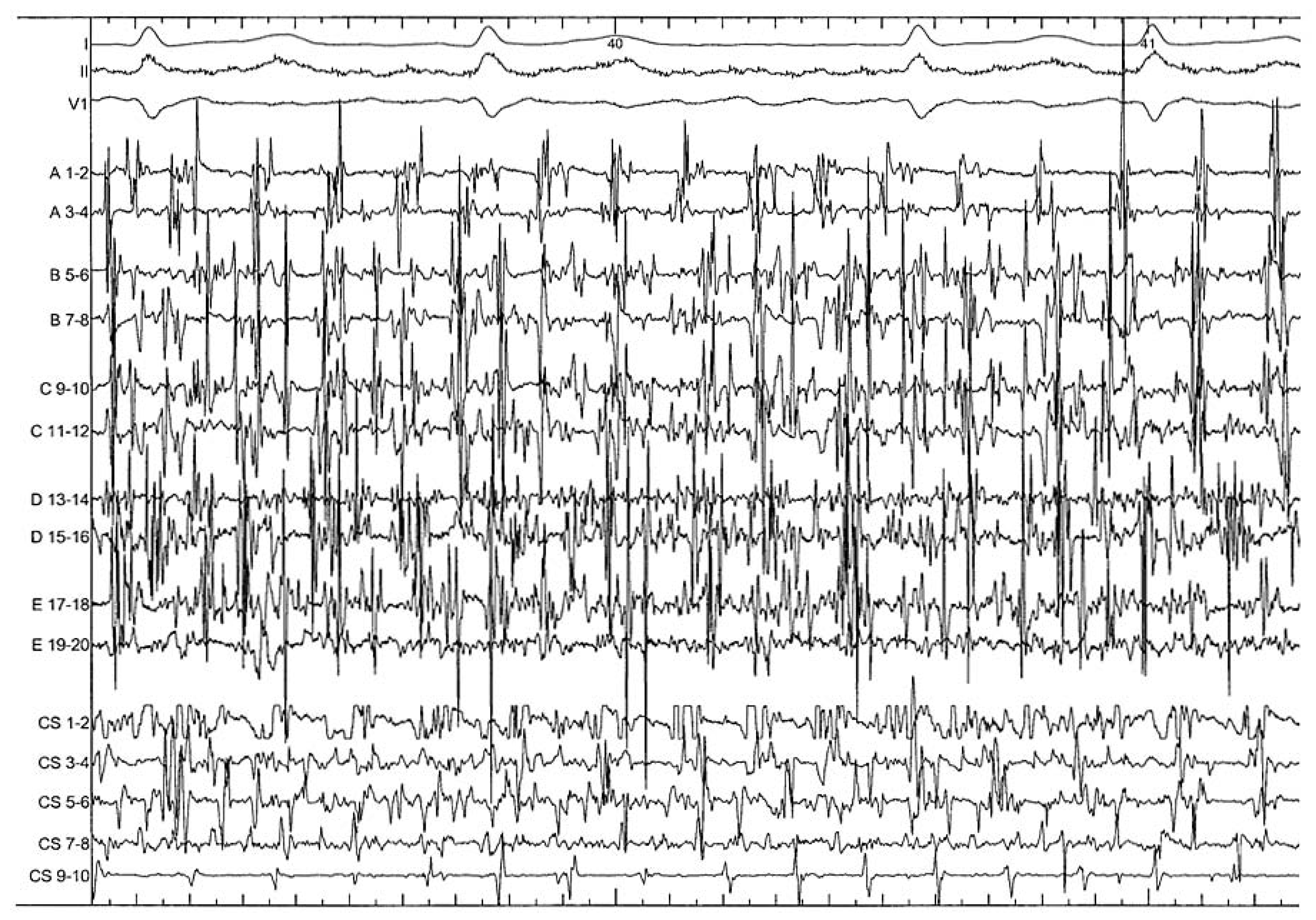
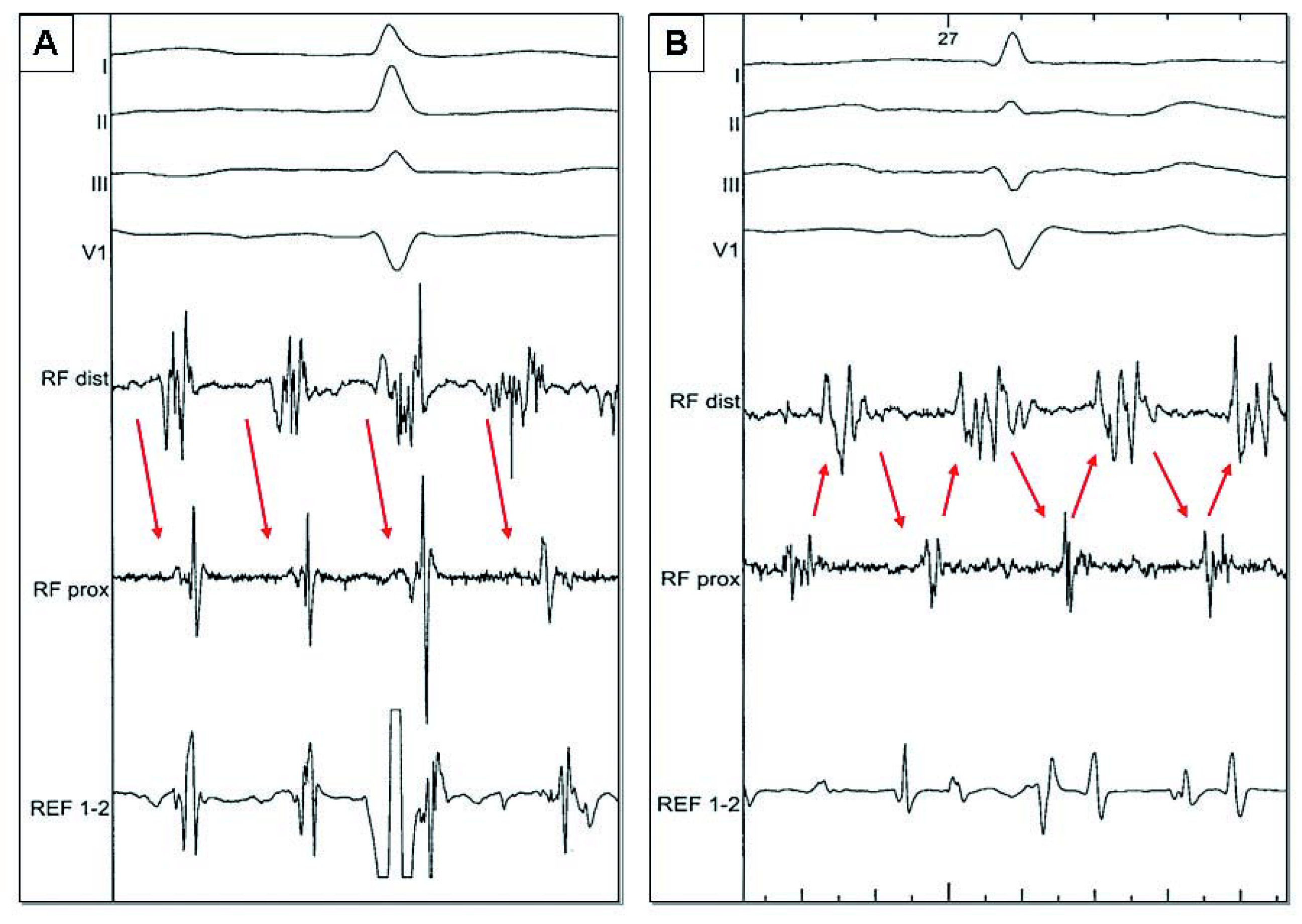
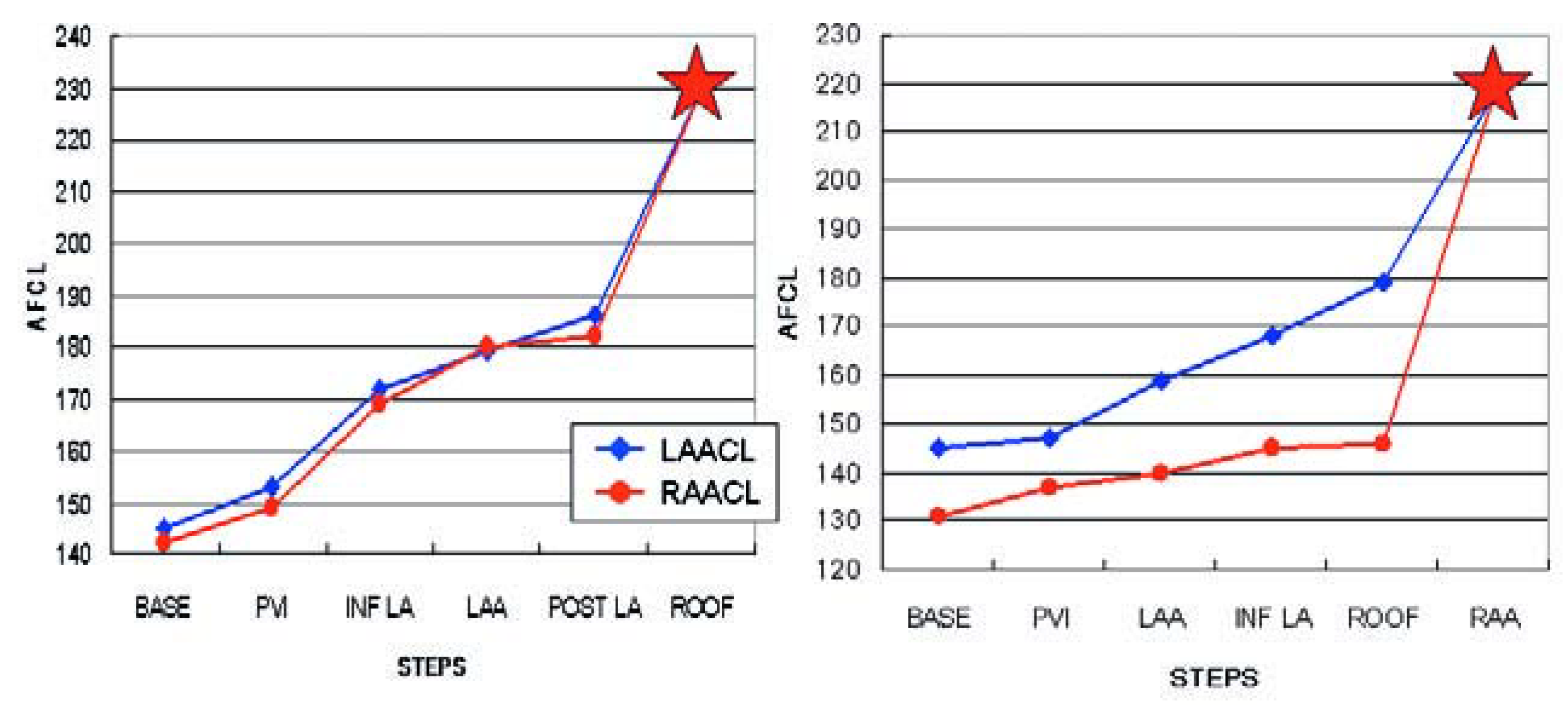
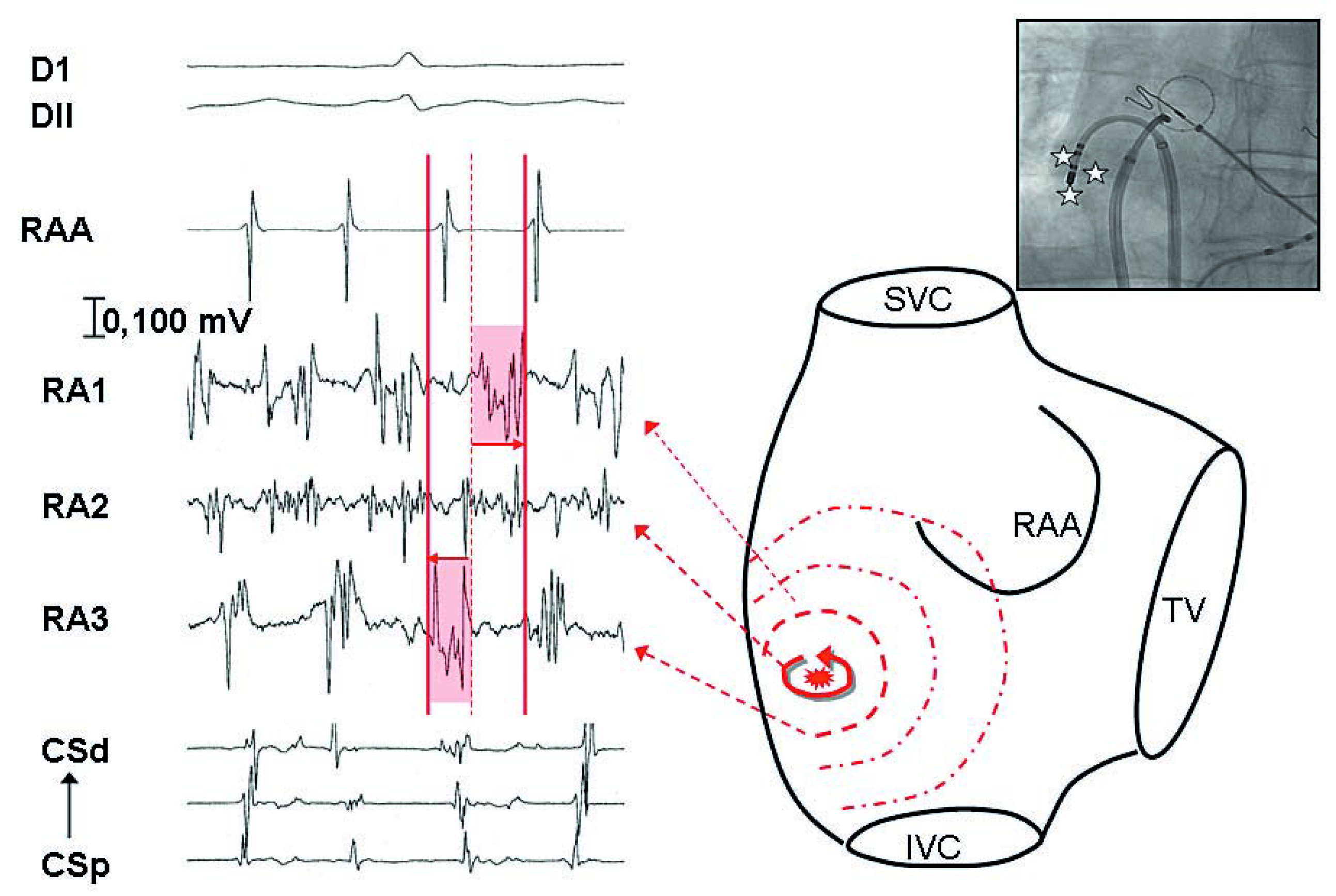
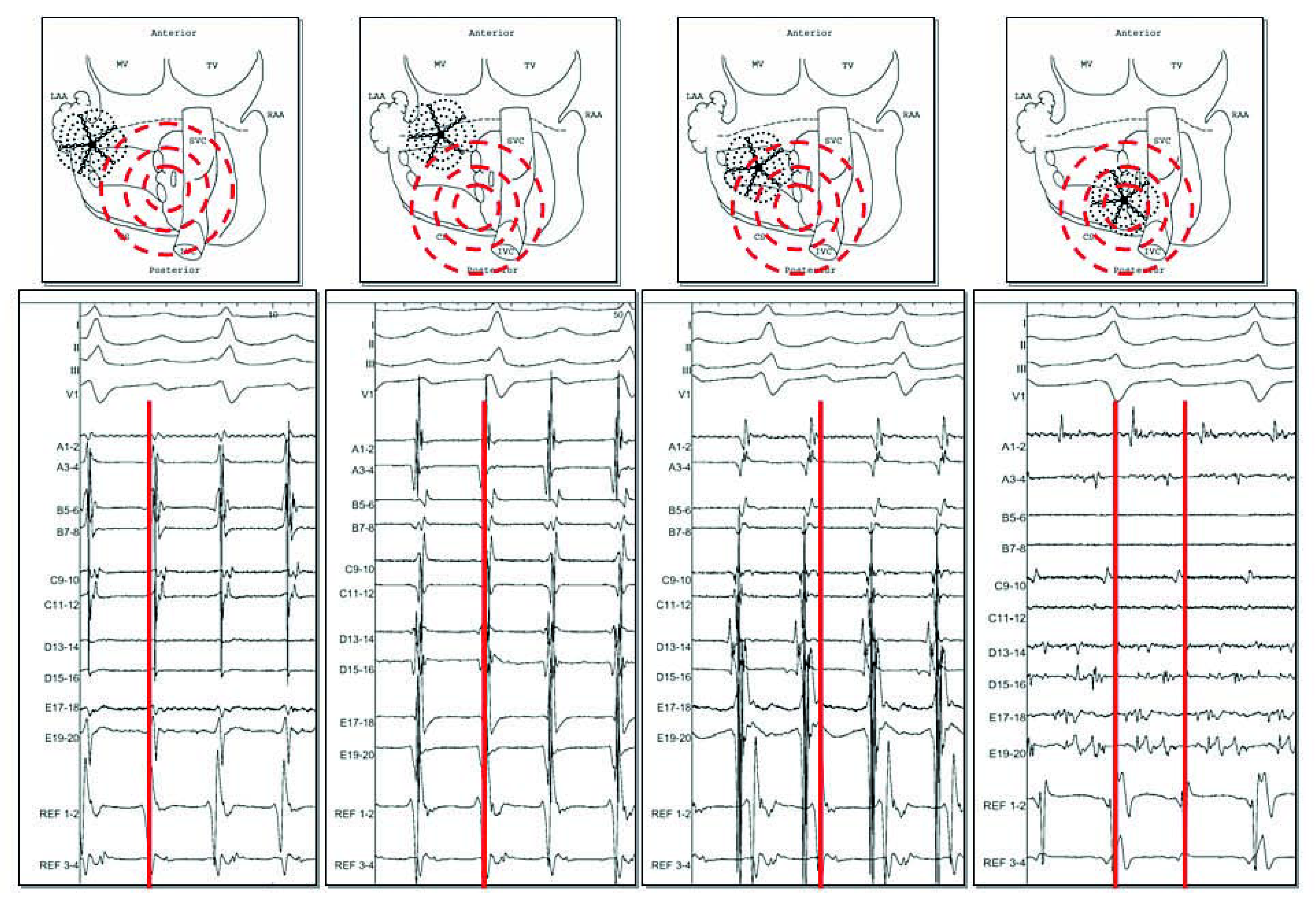
© 2008 by the authors. Attribution - Non-Commercial - NoDerivatives 4.0.
Share and Cite
Knecht, S.; Lim, K.-T.; O’Neill, M.D.; Matsuo, S.; Arantes, L.; Derval, N.; Sacher, F.; Deplagne, A.; Bordachar, P.; Hocini, M.; et al. High Efficacy of the Multifaceted Strategy for Persistent Atrial Fibrillation. Cardiovasc. Med. 2008, 11, 39. https://doi.org/10.4414/cvm.2008.01304
Knecht S, Lim K-T, O’Neill MD, Matsuo S, Arantes L, Derval N, Sacher F, Deplagne A, Bordachar P, Hocini M, et al. High Efficacy of the Multifaceted Strategy for Persistent Atrial Fibrillation. Cardiovascular Medicine. 2008; 11(2):39. https://doi.org/10.4414/cvm.2008.01304
Chicago/Turabian StyleKnecht, Sébastien, Kang-Teng Lim, Mark D. O’Neill, Seiichiro Matsuo, Leonardo Arantes, Nicolas Derval, Frédéric Sacher, Antoine Deplagne, Pièrre Bordachar, Mélèze Hocini, and et al. 2008. "High Efficacy of the Multifaceted Strategy for Persistent Atrial Fibrillation" Cardiovascular Medicine 11, no. 2: 39. https://doi.org/10.4414/cvm.2008.01304
APA StyleKnecht, S., Lim, K.-T., O’Neill, M. D., Matsuo, S., Arantes, L., Derval, N., Sacher, F., Deplagne, A., Bordachar, P., Hocini, M., Jaïs, P., Clémenty, J., & Haïssaguerre, M. (2008). High Efficacy of the Multifaceted Strategy for Persistent Atrial Fibrillation. Cardiovascular Medicine, 11(2), 39. https://doi.org/10.4414/cvm.2008.01304



